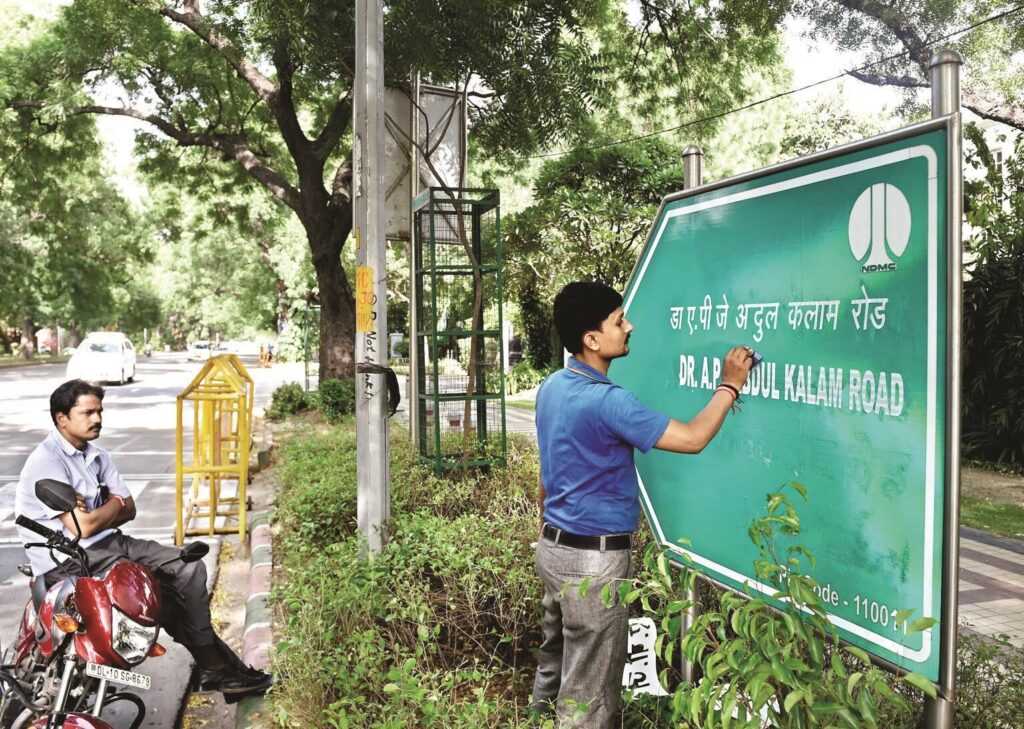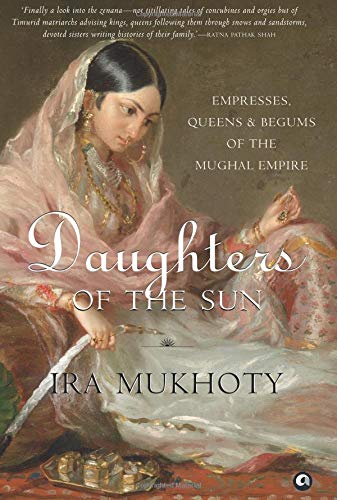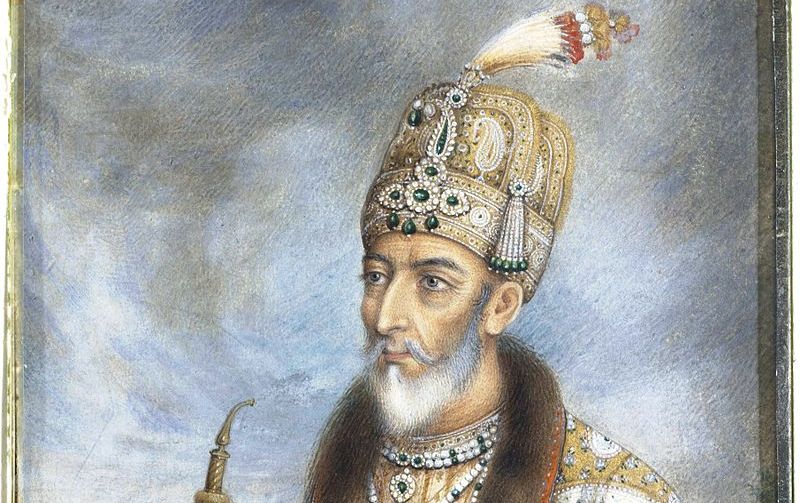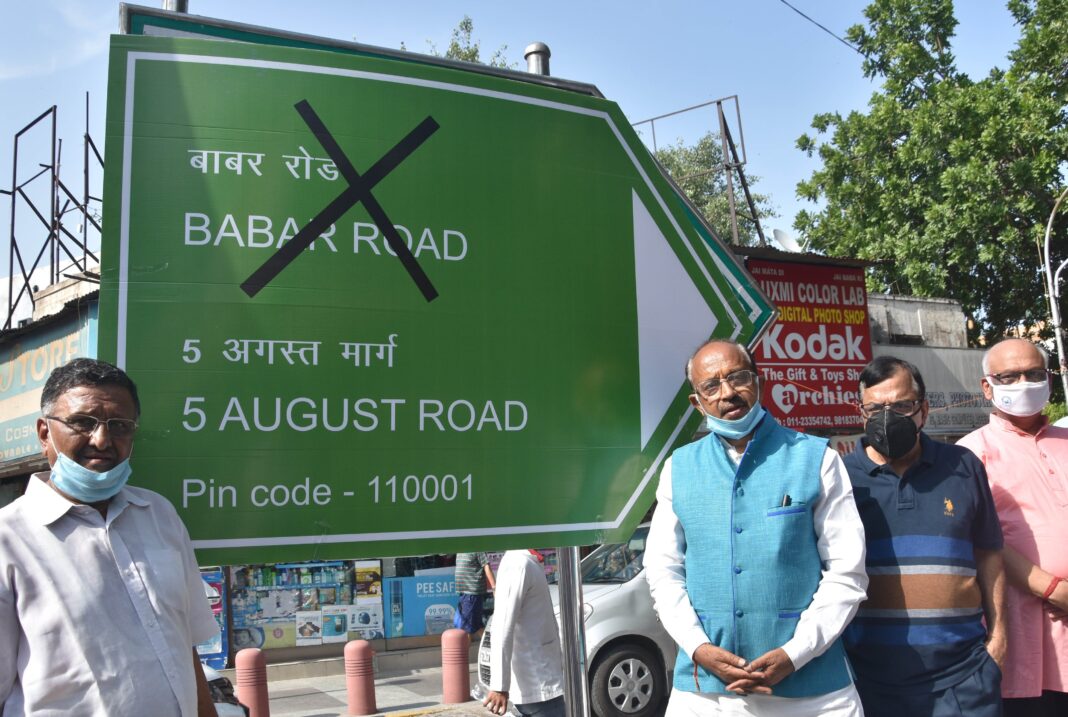INDIA. New Delhi. Amidst criticism from several noted historians and scholars, Lutyens’ Delhi’s Aurangzeb Road was renamed as Dr A P J Abdul Kalam Road on 29 August 2015 as per the wishes of the BJP Member of Parliament, Maheish Girri. “We need to correct the mistakes made in our history,” Girri had written in his plea to Prime Minister Narendra Modi. Now, it is well documented that the British were swift in dealing with the last Mughal Emperor Bahadur Shah Zafar and whatever remained of the Mughal legacy in the aftermath of the failed mutiny of 1857. William Dalrymple quotes the then British Prime Minister Lord Palmerston in his book Last Mughal, “Every civil building connected with the Mohammedan tradition should be leveled to the ground without regard to antiquarian veneration or artistic predilections.” The instructions were clear, for the British were hell-bent on wiping every possible remnant of the past Mughal glory. And yet, when the British inaugurated the city of New Delhi in the early 20th century they chose to name its roads and parks after the Mughal rulers. For, they wanted the people to remember the city’s history. It was meant to be an ode to the great rulers whose vision had shaped Delhi. But, on the contrary, the BJP law maker seemed too keen “to correct the mistakes made in our history”.

Now, another BJP lawmaker, Vijay Goyal has gone one step further. Taking the law in his hand, Goyal defaced the Babar Road signboard (in New Delhi’s Bengali Market) and renamed it as “5 August Road” while demanding that the Centre to make the name change official. In his plea to Union Home Minister Amit Shah and the New Delhi Municipal Corporation, Goyal wrote, “Babar was an invader who attacked Hindustan and demolished Ram mandir. The PM is going to perform a groundbreaking ceremony for a grand temple in Ayodhya tomorrow. At such a time, it will be an appropriate move to rename Babar Road as 5 August Marg.”
It is worth mentioning here that the Babri Masjid in Ayodhya was demolished by Hindu extremists on December 6, 1992, claiming that it had been built on sacred land where a temple once stood. The incident triggered riots leading to great loss of life and property and a long judicial battle ensued. The Supreme Court last year gave a verdict that the disputed land in Ayodhya would be handed over to a government-run trust for the construction of a Ram temple while acknowledging that the demolition of Babri Masjid was illegal. The court also directed the government to acquire another piece of land to build a mosque. The Muslim side despite feeling aggrieved decided against challenging the verdict for the great good of the people of the country.
Read Muslim Woman Defies Tradition and Rewrites Nikah Nama
Now, Goyal’s shameless antics and the controversial decision to rename Aurangzeb Road remind one of Lord Palmerston’s diktat to raze the city of Delhi to ground. Fast forward to the present day, it is becoming a regularity to hear reports of the governments in the BJP ruling states trying to fiddle with history text books, even to the extent of altering the course of historical battles in the favor of Hindu rulers and portraying Mughal rulers as marauders and mass murderers. One wonders if this is a part of a bigger plan to demonize the Mughals in the eyes of the present and the future generations in a bid to perpetuate the Hindu supremacy and further alienate the Muslim minority living in the country.
Ira Mukhoty’s 2018 book Daughters of the Sun emphatically puts to rest the scandalous claims that the Mughals saw India not as a home but as a place of plunder. She writes, “The ambition of the Mughals of India, from the time of Babur himself, was to found an empire worthy of their glorious ancestors. Hindustan, for them, was never a plunderous foray. It was a homeland to be created and claimed, at a time when anything less than blistering confidence meant instant death”. After defeating Ibrahim Lodi in the first battle of Panipat in 1526, Babur began the task of establishing a glorious empire in India on the lines of what his Timurid ancestors had established in Central Asia. So in 1528 he sent an open invitation “asking all his haraman and kinsfolk to join him in Hindustan”.


According to the accounts of Gulbadan, cited by Mukhoty, Babur was so determined to establish an empire in India that he was willing to take anyone in his service, especially the ones who have served his father and grandfather and ancestors. “This, then, is more than just a royal summons to his family. This is an anointing of his dreams of empire,” asserts Mukhoty. Babur’s relentless efforts to make India his home found a living testament more than 100 years later when Shah Jahan’s youngest son Murad Baksh abandoned his post in Balkh, unable to withstand the icy cold winters. Mukhoty writes, “But in a poignant reversal of Babur’s situation when his noblemen wanted to desert the hot and terrible lands of Hindustan for Kabul, Murad Baksh now piteously complains to his father about the stark and uncongenial conditions of the Balkh province,” confirming that the Mughals had long accepted India as their adopted homeland.
For her book, Mukhoty chooses to look beyond the European sources as her main material, often relying on the underutilized Persian texts such the accounts of Babur’s daughter Gulbadan or Akbar’s out-of-favor biographer Badauni or the writings of Shah Jahan’s beloved daughter and Aurangzeb’s respectable elder sister Jahanara. When these texts are interpreted along with the popular European texts as well as the official accounts of biographers like Abul Fazal, it allows for a far more comprehensive understanding of the state of affairs during the Mughal period. Also, Mukhoty often uses the accounts of females like Gulbandan, Jahanara, and Mrs Meer Hasan Ali, a nineteenth century Englishwoman married to an Indian man, which allows her to present a feminist take on Mughal history, furthering the great progress made by Professor Ruby Lal’s pioneering work Domesticity and Power in the Early Mughal World.
So, when Mukhoty talks about the Mughal zenana, she is able to break free of the European fascination for the “Oriental harem” which Mukhoty describes as “a lurid and sometimes fantastical mix of bazaar gossip, stray gleanings of fact and sexual fantasy.” Mukhoty explains, “Most of the women of the Mughal haraman were, in fact, not wives at all; they were mothers, like Hamida Banu and Harkha Bai, unmarried sisters, like Zeb-un-Nisa and Zeenat-un-Nisa, aunts, like Gulbadan, distant relatives, like Salima Sultan, elderly dependents, etc. They were not sexually available women at all. And yet they all had a role to play, a duty to perform, and they were respected, and paid, for these crucial jobs. The lives they led and the influence they exerted changed in ways both subtle and significant over 200 years.”
Read From First Female Police Officer Of Maharashtra To Investigator With Indian Central Bureau
Mukhoty’s accounts offer interesting insights about the liberal Timurid tradition of educating their girls in mathematics, history, physics, poetry, astronomy, etc. just as boys which ensured that the Timurid women were among some of the most educated of their age. Daughter of the Sun introduces us to Mughal matriarchs who commanded great respect right from the days of Babur and Humanyun. Among them, perhaps the most fascinating account is reserved for one Khanzada Begum who, at the age of sixty-five, rode on horseback through 750 kilometers of icy passages, battling unforgiving weather, to negotiate a deal on the behalf of her nephew, Humayun. Earlier, at the age of twenty-three, she was forced to marry the ferocious Uzbek warlord Shaybani Khan in order to help secure a safe passage for Babur, her younger brother. A decade later when the mighty Shah Ismail, the founder of the Safavid dynasty, beheaded Shaybani Khan he respectfully escorted Khanzada to Babur along with a jeweled drinking goblet made out of the dead warlord’s skull. Babur was overjoyed to reunite with his sister. No stigma was ever attached to her.
“They [Mughals] were pragmatic about women who ‘fell’ to an enemy, unlike their contemporaries, the Rajputs, who invested so heavily in their women’s sexual chastity that death, through sati, was preferred to ‘loss of honor’ to an enemy,” explains Mukhoty. Of course, the Rajput women also practiced jauhar—mass self-immolation by the royal women to avoid capture, rape and enslavement at the hands of Muslim rulers. While the patriarchal Rajputs saw it as an act of honor, the pragmatic Mughals despised it. After every successful siege, Aurangzeb, who is perhaps the most hated of all Muslim emperors as far as the Hindu right-wing is concerned, would personally ensure that all attempts of royal women to commit Jauhar were thwarted at the earliest possible. One of the references in the book points towards the 1635 battle between Aurangzeb and rebellious Raja of Orchha, Jujjhar Singh of Bundelkhand, wherein the 16-year-old Mughal prince after defeating Jujjhar Singh rushed to the raja’s stronghold to prevent the women of the zenana from committing jauhar.
Several accounts in Daughters of the Sun point towards the irrefutable influence that the Mughal women enjoyed in the royal court, whether Khanzada Begum, Maham Anaga, Akbar’s foster mother, Noor Jahan, the beloved wife of Emperor Jahangir, Mumtaz Mahal, Shah Jahan’s chief consort in whose memory he commissioned the construction of the Taj Mahal, or his eldest daughter Jahanara. It often baffled the Europeans present at the court. Mukhoty explains, “In Christian Europe at this time, ideal women are expected to be entirely subservient to their fathers and then to their husbands. Extensive lists are published, explaining how women are meant to serve men faithfully, and detailing their expected characteristics: ‘modesty, courtesy, gentleness, affability and good government’. The ideal woman, it is stated, ‘obeyed the commandment of the apostle who bideth women be silent and learn of their husbands at home’. Silence in a woman is valued almost above all other virtues except, perhaps, chastity.”


Mukhoty ends her book with perhaps the saddest chapter in the history of Indian subcontinent: the last Mughal emperor Bahadur Shah Zafar’s exile to Burma after the failed uprising of 1857. What happened to Zafar was certainly unfortunate but the fate of the royal women was worse. According to William Dalrymple, there was widespread rape of the Mughal women by the British troops. In the words of the legendary Urdu poet Mirza Ghalib, “The female descendants, if old, are bawds; if young, are prostitutes.” As per Lord Palmerston’s direction, Akbarabadi Begum’s grand mosque was destroyed along with Jahanara’s caravanserai in the middle of Old Delhi.
Mukhoty explains, “Apart from the buildings that were destroyed, the entire upper echelon of Muslim nobility was also swept away from Old Delhi, either killed or banished. All Muslim property was confiscated, the mosques deconsecrated and the madrasas locked up. When the Hindu population was slowly allowed back into the city, the mosques and the Muslim properties were sold to Hindu bankers for nominal sums.” Urdu and Persian begin to die a slow death as manuscripts were burned and libraries were destroyed. “The British would consistently undermine Muslim influence while promoting Hindu culture, thereby nonchalantly creating fault lines that fracture India to this day,” regrets Mukhoty.
At a time when India is witnessing the vilest form of Hindu fundamentalism ever recorded in history, as Muslims are being lynched, artists and intellectuals are being subjected to verbal and physical assaults, history textbooks are being rewritten, national monuments like Taj Mahal are being vandalized, and students are being charged with sedition, Ira Mukhoty’s Daughter of the Sun not only succeeds in finally bringing the Mughal women in the much-deserved limelight but it also manages to put in the right perspective the Mughal influence on India’s sociopolitical history. How the Timurid Muslim rulers from Central Asia by the virtue of making India their home perpetuated the intermingling of the Islamic and Hindu cultures, what would come to be known as the Ganga-Jamuni Tehzeeb, which today feels threatened, more than ever, by the rise of right-wing Hindutva politics.



